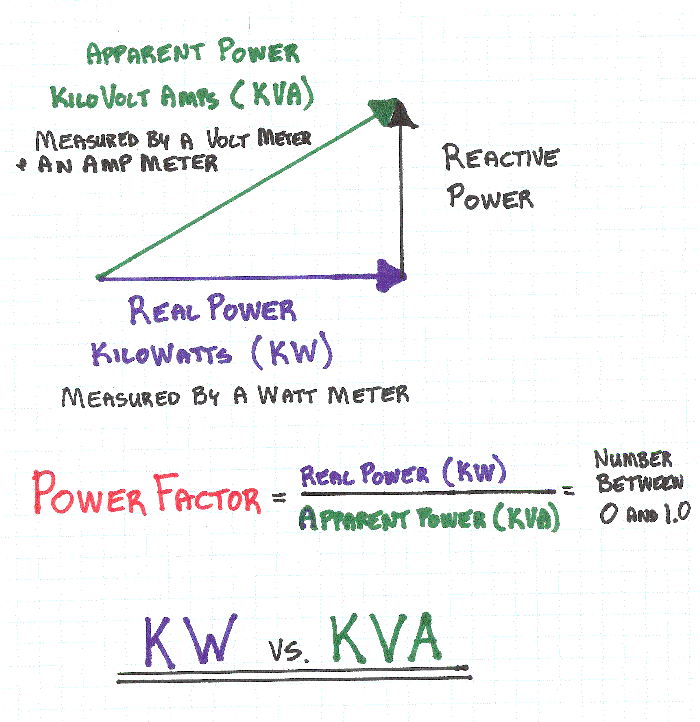What is the Difference between KW and KVA?
Electrical utility companies provide volt-amperes to customers, but bill them for watts. Understanding this concept will help you better understand many of the decisions made by project owners and electrical engineers. Since the Power Law shown above lists Watts = Volts x Amps, you may think that the number of volt-amperes should be the same as the number of watts. After all, that's what the Power Law equation states. And it's true when the load is resistive, say an electrical heating element that uses all the power that is delivered to it by changing the electrical energy into heat energy. A motor or a fluorescent light, on the other hand, are reactive loads in that part of the electrical power that goes to them gets absorbed, then returned to the circuit without being used. The reactive portion of the load dissipates no power.
Let's look at it a different way. When trying to understand generators that are specified for a project, you will often see them listed with KVA numbers. So what does that mean? If you know that you will have 100 amps of load at 208 volts, you'd need an transformer with at least 20.8 KVA. If you installed that transformer and measured the volts you'd see 208 volts and an amp meter would show 100 amps. But since part of that current goes back into the circuit without being used, the real power (or the KiloWatts) would be less than 20.8 KW. The figure below illustrates:

So with our generator example above, if the power factor is 0.8, then the real power used will be 20.8 KVA x 0.8 power factor or 16.6 KW.
Since we're discussing generators, it's good to know that the industry standard power factor assumed for rating generators is 0.8. But the reality of what the generator will actually drive under load depends on the actual power factor. To continue with the above example, if you use a 16.6 KW generator but lots of small induction motors are being powered and the true power factor is 0.6, then the apparent power required will be 16.6 KW / 0.6 = 27.7 KVA. The right conclusion to draw, though, is to discuss and purchase generators using the KVA requirements, not the KW.
No comments:
Post a Comment